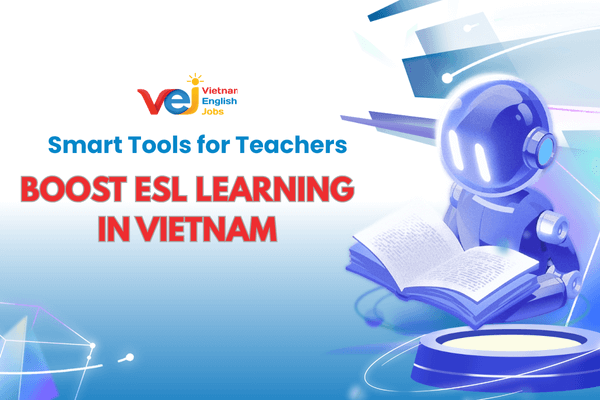Learning Vietnamese: Fun and Practical Tips for Foreign Teachers
For foreign teachers in Vietnam, learning Vietnamese may seem challenging at first. With six tones and a unique writing system, the language can feel intimidating. However, mastering even basic Vietnamese brings huge benefits: better communication with students, stronger connections with locals, and a smoother daily life.
The good news is that learning Vietnamese doesn’t have to be difficult, it can be fun and practical if approached the right way. In this article, we’ll share useful tips for foreign teachers to learn Vietnamese effectively while enjoying the process.

1. Start with Everyday Vocabulary
- Focus on essential words and phrases for daily life: greetings, numbers, food, transportation.
- Use flashcards or apps like Anki, Duolingo, or Memrise to practice consistently.
- Learn classroom-related vocabulary to communicate better with students.
Mastering simple phrases such as “Xin chào” (Hello) or “Cảm ơn” (Thank you) can immediately make daily interactions easier.
2. Practice Pronunciation and Tones Early
Vietnamese is a tonal language, meaning the pitch changes the word’s meaning.
- Focus on the six tones from the beginning.
- Practice listening and repeating words with native speakers.
- Use YouTube channels and language apps that emphasize pronunciation.
Correct tones make a huge difference in being understood, so early practice is key.
3. Learn Through Real-Life Situations
- Practice speaking Vietnamese in real contexts: ordering food, shopping, taking a taxi.
- Don’t be afraid to make mistakes—locals often appreciate the effort.
- Join Vietnamese conversation groups or language exchanges with students.
Daily practice builds confidence and makes learning more natural.
4. Combine Language Learning with Culture
Vietnamese is deeply tied to its culture.
- Learn common idioms or proverbs to understand local thinking.
- Watch Vietnamese TV shows, movies, or YouTube content.
- Listen to Vietnamese music to improve listening skills and pick up new words.
This not only improves language skills but also helps teachers connect better with their students.
5. Take Vietnamese Classes with Native Teachers
- Many language centers and tutors offer beginner-friendly courses.
- Native teachers can correct pronunciation, tones, and grammar mistakes immediately.
- Group classes are also a great way to meet other foreign teachers and share experiences.
Learning with a native teacher accelerates progress and ensures accurate language use.
6. Stay Consistent and Make It Fun
- Set small, achievable goals, like learning 10 words per day.
- Use games, apps, or podcasts to keep practice enjoyable.
- Reward yourself when you reach milestones in your learning journey.
Consistency matters more than perfection, regular exposure is the key to fluency.
For foreign teachers in Vietnam, learning Vietnamese is both practical and rewarding. It improves classroom communication, strengthens community relationships, and makes daily life more enjoyable. By focusing on everyday vocabulary, practicing tones, learning through real-life situations, and combining study with culture, teachers can turn Vietnamese learning into a fun and effective experience. Start small, stay consistent, and enjoy the journey of learning Vietnamese, it will make your teaching and life in Vietnam much more fulfilling.

















